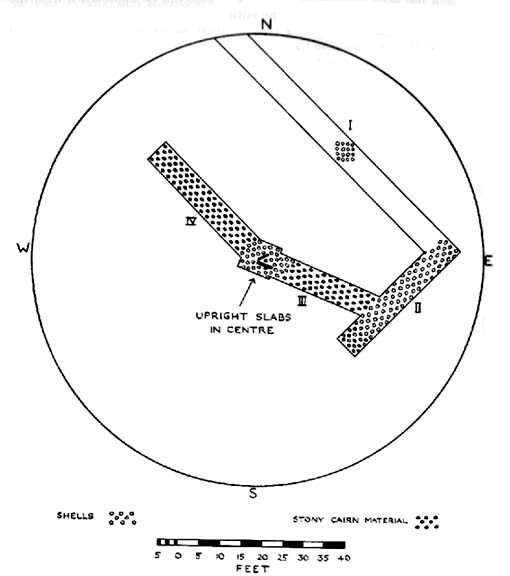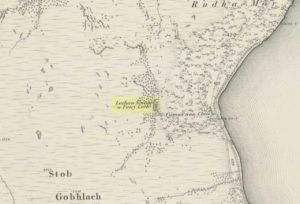Cairn: OS Grid Reference – NR 9874 9736
Also Known as:
Archaeology & History

Just over 100 yards northeast of the chambered cairn in Crarae Garden we can see the denuded remains of this old mound, long ago held as the dwelling place of the little people. When it was first described in 1865, a standing stone was reported as surmounting the tomb, but this can no longer be seen. Further excavations made by Sir George Campbell in 1923 and reported in the Oban Times, showed the cairn to have been 108 feet across and nearly 6 feet tall at the centre — beneath which a “stone coffin” was found. It was said that two passages ran from this middle chamber: one to the southwest and the other roughly southeast. Deposits of shells, antlers, and the bones of cattle, deer, horses and sheep were also found here.
References:
- Royal Commission on the Ancient & Historical Monuments, Scotland, Argyll – volume 6: Mid-Argyll and Cowal, HMSO: Edinburgh 1988:61.
- Scott, J.G., “Excavation of the Chambered Cairn at Crarae, Loch Fyneside,” in Proceedings of the Society of Antiquaries, Scotland, volume 94, 1961.
Links:
- The Fairy Knowe, Crarae – on Scotland’s Places
© Paul Bennett, The Northern Antiquarian
